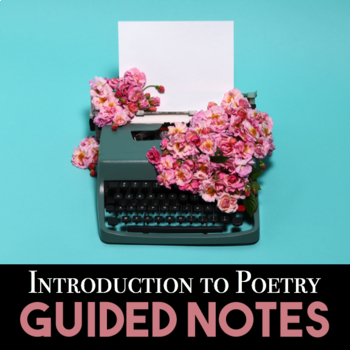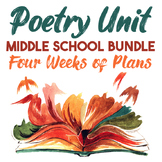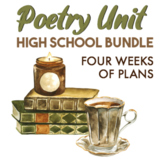Introduction to Poetry | Guided Notes | Intro to Poetry
- Zip
What educators are saying
Also included in
- This resource is a FULL POETRY UNIT for ELA grades: 7th, 8th, or 9th! You will get a collection of different lessons, activities, and projects, plus a TDA essay, digital escape room, and final test! I've also included an example schedule for teachers to follow day-by-day!Included in this middle schoPrice $19.99Original Price $27.89Save $7.90
- This resource is a FULL POETRY UNIT for High School English, Grades 9-12!You will get a collection of various lessons, activities, and projects, plus an awesome digital escape room, and final test! I've also included a schedule for teachers to follow day-by-day! This bundle is so diverse and your stPrice $19.99Original Price $31.87Save $11.88
Description
Teach your students what a poem is as well as all the important information necessary while teaching poetry, like: vocabulary, sound devices, types of poetry, figurative language, how to analyze a poem, and how to find rhyme scheme.
In this resource, you will receive a packet of graphic organizers/guided notes along with a Powerpoint lesson that teaches the following terminology:
VOCABULARY
poem, speaker, line, stanza, quatrain, couplet, cinquain, tercet, refrain, symbol, theme, mood
tone, imagery, juxtaposition, oxymoron, pun, paradox, allusion, proverb, foot, iamb, iambic pentameter, enjambment, anaphora, metonymy
FIGURATIVE LANGUAGE
simile, metaphor, personification, idiom, hyperbole, irony
SOUND DEVICES
rhyme, rhyme scheme, slant rhyme, rhythm, meter, alliteration, consonance, assonance, onomatopoeia, repetition
TYPES OF POETRY
narrative, lyrical, haiku, ballad, sonnet, limerick, free verse, acrostic, concrete, blank verse, blues poem, elegy, ode, prose, villanelle
HOW TO ANALYZE A POEM
HOW TO DETERMINE RHYME SCHEME




